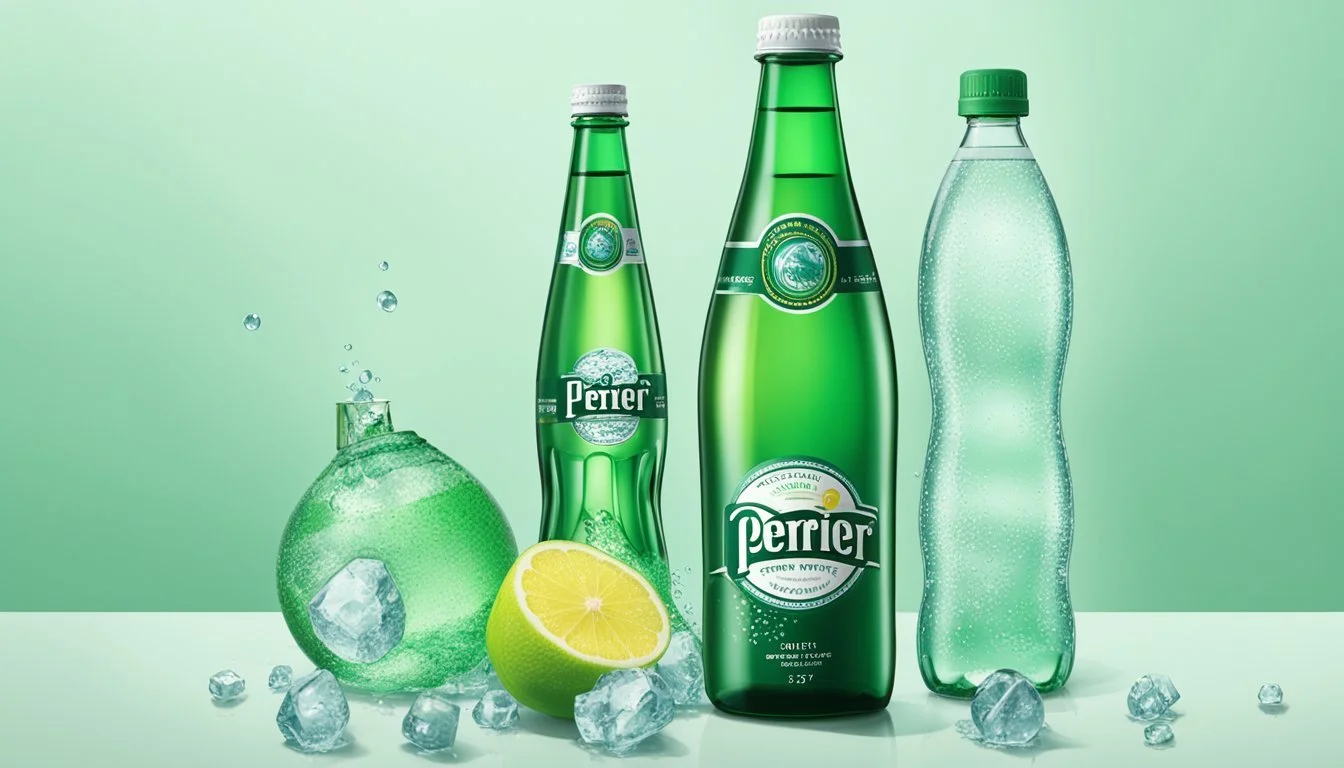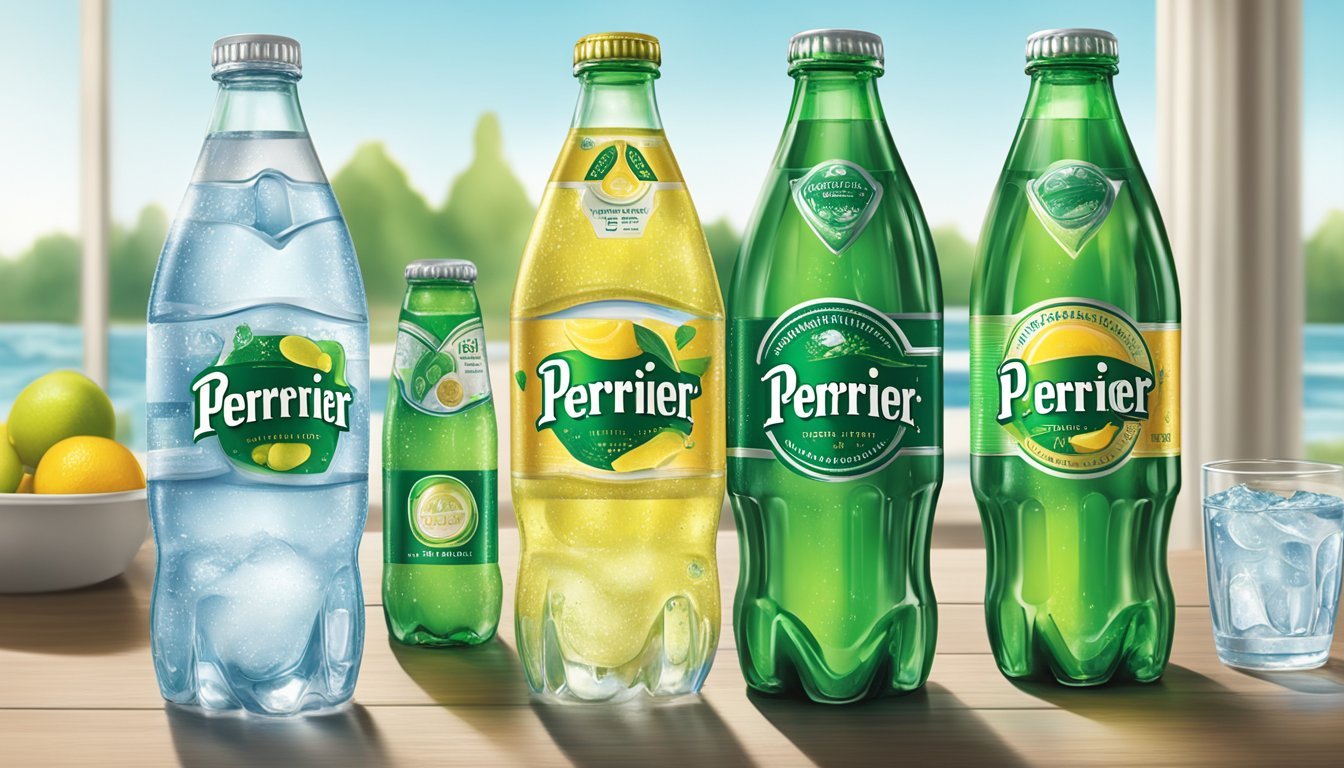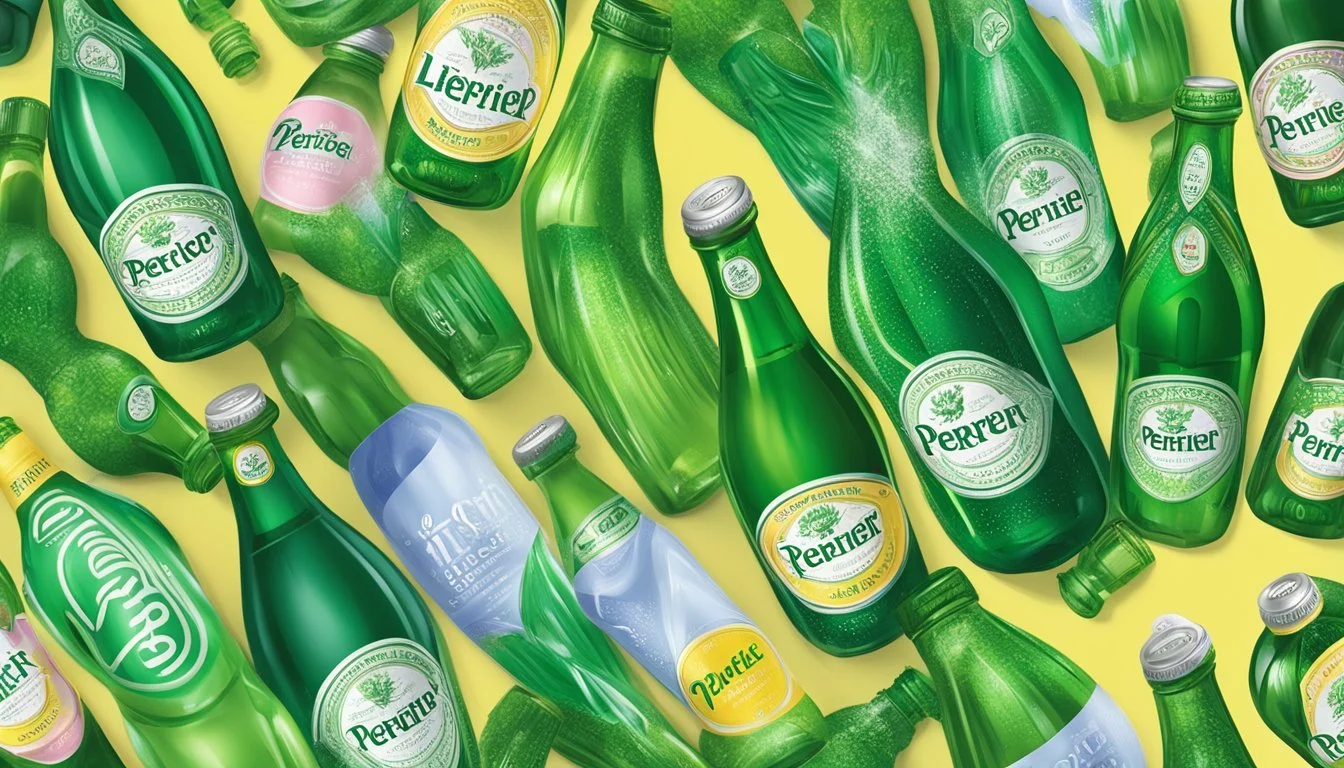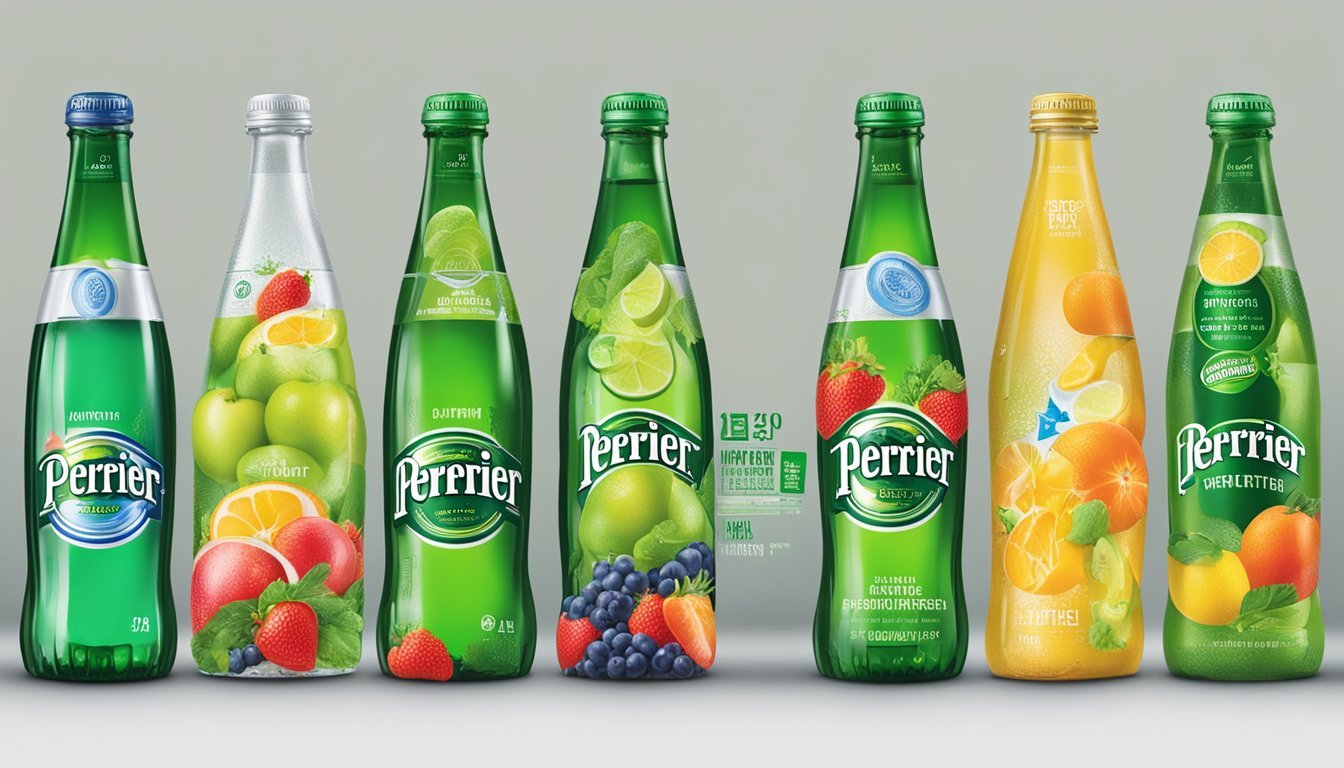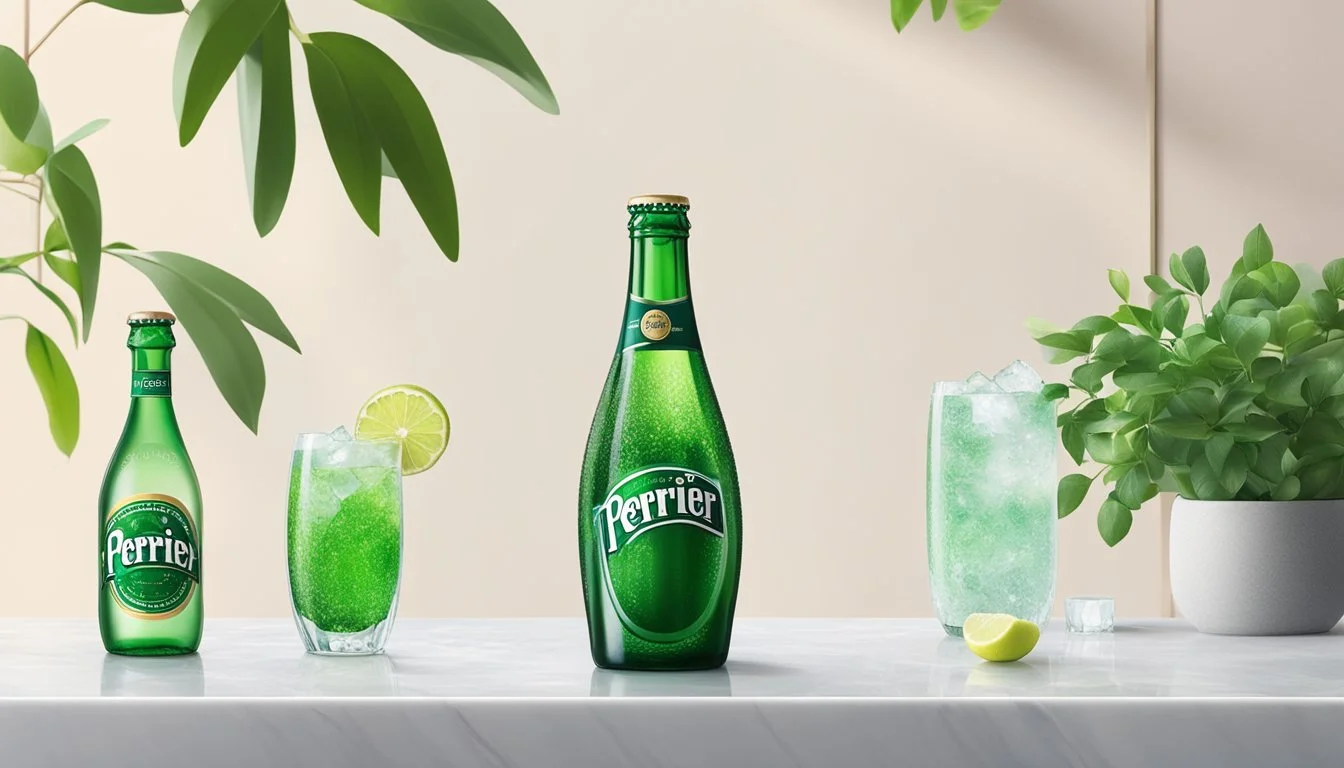LIFEWTR vs. Perrier
Comparing Quality and Taste in Bottled Waters
Choosing the right bottled water can be a matter of personal preference, health considerations, and environmental impact. Two brands that often come into the spotlight are LIFEWTR and Perrier. Both offer distinct qualities and cater to different consumer needs. LIFEWTR is known for its purified water, which is pH balanced and enhanced with electrolytes. The brand emphasizes not only hydration but also art, as it showcases different artists' work on its bottles.
Perrier, on the other hand, stands out with its naturally carbonated mineral water sourced from the south of France. It has a long-standing history and is recognized for its distinctive green bottle and refreshing taste. The bubbles in Perrier offer a completely different experience from the still water of LIFEWTR, making it a preferred choice for those who enjoy sparkling water with a touch of natural flavor.
When comparing LIFEWTR with Perrier, consumers may consider factors such as taste, purification process, added minerals, and whether they prefer still or sparkling water. Both have their merits, but ultimately, the choice between LIFEWTR and Perrier boils down to what the individual values more in their bottled water — the artful hydration of still water or the classic effervescent experience of sparkling mineral water.
Background on Bottled Water
The realm of bottled water encompasses a diverse range of options, each distinguished by its source and mineral content. Consumers choose bottled water for its convenience and perceived purity compared to tap water. This section will explore the origins and types of bottled water, focusing on their distinct characteristics.
History of Bottled Water
Bottled water has a storied history, dating back to ancient times when water from natural springs was considered a therapeutic commodity. In the 17th century, the commercialization of bottled spa waters in Europe marked the beginning of the modern bottled water industry. With advancements in packaging technology, bottled water became widely accessible, and its popularity surged in the 20th century.
17th Century: Emergence of bottled spa waters in Europe.
20th Century: Technological developments promote bottled water availability.
Types of Bottled Water
Bottled water can be classified into several types based on the source and treatment process.
Spring Water: This water originates from an underground formation and must flow naturally to the surface. It may contain a variety of minerals and undergo minimal processing.
Mineral Water: This type comes from a mineral spring and contains various minerals, including sulfur compounds and salts. It is often effervescent due to the natural occurrence of gases.
Alkaline Water: Water characterized by its higher pH level, potentially containing minerals that elevate pH.
Artesian Water: Derived from a well tapping a confined aquifer where the water level stands above the top of the aquifer.
Purified Water: This category includes water from any source that has been treated to remove chemicals and pathogens, such as via distillation, deionization, or reverse osmosis.
Enhanced Water: Water enriched with additional components like electrolytes for taste or for promoting health benefits.
Each type of bottled water may offer different benefits:
Minerals: Essential for health and often found naturally in spring and mineral waters.
Electrolytes: Important for hydration; may be added to purified or other types of waters.
Comparing LIFEWTR and Perrier
In comparing LIFEWTR and Perrier, key factors such as brand reputation, sources, production processes, and mineral content offer insights into their unique offerings in the bottled water market.
Brand Overview
LIFEWTR is a premium brand of bottled water that puts a large emphasis on design and artistry in its packaging. Its product is positioned as a source of hydration that doubles as a canvas for art and creativity. On the other hand, Perrier is a well-known French brand that specializes in sparkling mineral water often recognized for its distinctive green bottle and higher levels of carbonation.
Source and Production Process
LIFEWTR sources its water from public water sources, also known as municipal water supplies. The water is then purified through a rigorous reverse osmosis process that removes impurities. The filtration process involves several stages designed to ensure purity and quality, giving it a clean, pure taste.
Perrier, on the contrary, is a natural sparkling mineral water. It is sourced from a spring in Vergèze, located in the Gard département of France. The water is naturally filtered through underground limestone and a bed of volcanic rock, which enriches Perrier with minerals. Unlike LIFEWTR, Perrier's water gains carbonation naturally from the source aquifer, without the need for artificial carbonation.
Mineral Content
The mineral content of bottled water can greatly affect both its taste and nutritional profile. LIFEWTR is characterized as a purified water, and as such, it generally has a low level of total dissolved solids (TDS), since most minerals are removed during purification. However, it does add back a blend of electrolytes for taste.
In contrast, Perrier is classified as a mineral water, boasting a unique blend of minerals like calcium, magnesium, and bicarbonate. These minerals contribute to Perrier's signature taste and its slight alkaline pH. The naturally occurring minerals result from the water's journey through the mineral-rich rock formations before emerging at the spring.
Water Quality and Safety Standards
When comparing bottled water brands such as LIFEWTR and Perrier, water quality and safety standards are pivotal. These standards ensure that consumers receive clean drinking water free from harmful contaminants and chemicals.
Regulatory Compliance
Both LIFEWTR and Perrier brands adhere to regulatory compliance mandates set by the United States Environmental Protection Agency (EPA) and other relevant food and safety authorities. These regulations require routine testing for quality and safety, and the results must meet established standards for bottled water, which are:
Physical Properties: including color, smell, and taste.
Chemical Makeup: the presence of minerals or organic compounds must not exceed certain thresholds.
Contaminants and Chemicals
The EPA has established limits for over 90 contaminants in drinking water. For bottled water brands such as LIFEWTR and Perrier, consistent testing is performed to identify and quantify any of the following:
Microbiological Contaminants: bacteria and viruses that can cause illness.
Physical Contaminants: sediment or organic material from the source water.
Chemical Contaminants: elements or compounds like metals, nitrates, or organic chemicals.
Radiological Contaminants: cesium, plutonium, uranium that can be naturally-occurring or the result of oil and gas production.
LIFEWTR, a purified water, is filtered and treated to remove chemicals and contaminants, while Perrier, a natural sparkling mineral water, is sourced from a protected spring where it naturally gains minerals and carbonation. Each brand employs different processes tailored to the characteristics of their respective water types to ensure safety and compliance with health standards.
Flavor and Taste Profile
In the realm of bottled water, flavor and taste profile are often pivotal factors in determining consumer preference. LIFEWTR and Perrier offer distinct experiences in this regard, each with their own unique qualities that may appeal to different palates.
Carbonation and Taste
Perrier is a sparkling mineral water that is characterized by its natural carbonation, sourced from a well in France. The carbonation in Perrier can enhance the water's refreshing quality and provides a sharp, crisp taste that tingles the tongue. In contrast, LIFEWTR is a still water with no carbonation, offering a smooth and clean tasting experience without the effervescence.
Flavor Enhancements
LIFEWTR is categorically a purified water that includes added electrolytes such as magnesium sulfate and potassium bicarbonate for taste. These electrolytes aim to enhance the water’s flavor without contributing sweetness or a significant mineral taste. On the other hand, Perrier, as a mineral water, has a natural flavor profile that includes a distinct mineral taste with a hint of saltiness, which is a result of the minerals inherently present in the source water.
Natural vs Added Ingredients
The flavor profile of Perrier is impacted by the natural minerals found in the water. This includes elements such as calcium, magnesium, and sodium, which can impart a subtly salty and pleasantly bitter taste. LIFEWTR, however, starts with purified water that has minerals and electrolytes added back in for improved taste:
Mineral/Electrolyte Perrier (Natural) LIFEWTR (Added) Sodium Yes No Magnesium Yes Yes Potassium Yes Yes
Both brands offer a taste free of sugars and sweeteners, maintaining the purity expected from bottled water while differentiating in their approach to flavor enhancement.
Health Benefits and Minerals
Choosing between LIFEWTR and Perrier involves understanding their differing mineral contents and health benefits. Both brands offer hydration, but their mineral profiles are distinct.
Hydration and Electrolytes
Both LIFEWTR and Perrier provide hydration, which is crucial for maintaining bodily functions. LIFEWTR is a purified water, enhanced with electrolytes for taste, while Perrier is a naturally carbonated mineral water containing electrolytes such as magnesium, calcium, and sodium that can aid in hydration and replenishment of lost minerals.
Essential Minerals for Health
Perrier, being a mineral water, naturally contains a variety of minerals. These include:
Calcium: Important for bone health and muscle function.
Magnesium: Helps with muscle and nerve function, blood sugar control, and blood pressure regulation.
Sodium: Essential for nerve and muscle function and regulating body fluids.
LIFEWTR, on the other hand, is purified and then infused with added electrolytes for taste, mainly potassium bicarbonate and magnesium sulfate. While these minerals can have health benefits, the levels are typically lower than those found in natural mineral waters like Perrier.
Mineral LIFEWTR (amount per serving) Perrier (amount per serving) Calcium Not specified Naturally occurring Magnesium Added for taste Naturally occurring Potassium Added for taste Not specified Sodium Not specified Naturally occurring
One should note that the mineral content in Perrier can contribute to the daily intake of these essential nutrients. However, the exact contribution would depend on the amount consumed and the individual's overall diet and nutritional needs.
Environmental Impact and Sustainability
Choosing between LIFEWTR and Perrier bottled water involves considerations about their materials, recycling practices, as well as the sustainability of their water sources.
Bottle Materials and Recycling
LIFEWTR bottles are made from 100% rPET (recycled polyethylene terephthalate), which is a recyclable plastic. This not only supports recycling efforts but also reduces the number of new plastics introduced into the environment. The use of rPET signifies a closed-loop process, supporting a more sustainable lifecycle for the plastic bottles.
Perrier, traditionally known for its glass bottles, also offers products in plastic bottles. The brand ensures that its plastic bottles are recyclable. However, glass bottles have a higher recycling rate and longer life span compared to plastic bottles, which can be a determining factor for environmentally conscious consumers.
Water Source Sustainability
The water for LIFEWTR is sourced from publicly available water sources or aquifers, and then purified through a rigorous treatment process. They emphasize replenishing sources sustainably, though the growth of the bottled water market has raised concerns about the long-term viability of these aquifers.
Perrier sources its water from a spring in Vergèze, located in the Gard département of France. The source is naturally carbonated, which reduces the need for artificial carbonation processes. Perrier has been involved in efforts to ensure the sustainability of their spring and to protect the local environment, indicating a commitment to environmental stewardship.
Both LIFEWTR and Perrier have made strides in terms of environmental impact by using recyclable materials and addressing the sustainability of water sources. Consumers are encouraged to look beyond the products themselves and consider these environmental factors when making their choices.
Price and Consumer Preference
When comparing LIFEWTR and Perrier, two major considerations for consumers are the price of the bottled water and the brand preferences developed over time. These factors play a significant role in the decision-making process for consumers.
Economic Factors
The price of bottled water can significantly influence consumer choice. LIFEWTR, a brand owned by PepsiCo, is generally marketed as a premium water brand, and its price reflects this positioning. It's often available in 500ml bottles and can come in packs, which may offer some savings. On the other hand, Perrier, which is owned by Nestlé, is typically seen as an upscale brand, especially because of its sparkling water product line. Perrier can be more expensive than still bottled waters, including LIFEWTR, due to its unique proposition as a carbonated mineral water with natural flavors.
It's important to note that both brands may offer a range of products at different price points, with the final cost to consumers depending on factors such as store location, packaging size, and whether it's being sold as a single bottle or in bulk.
Brand Loyalty and Market Trends
Consumers often develop loyalty to water brands based on personal taste, the brand's marketing efforts, and the influence of market trends. LIFEWTR positions itself not just as a water brand but also as an advocate for art and creativity, featuring bottle designs that change periodically and are created by diverse artists. This creative branding approach could strengthen consumer preference toward LIFEWTR.
Perrier, recognized by its green glass bottle and distinctive logo, also benefits from brand loyalty. The brand has established itself as associated with sophistication and has been a part of the market long enough to gain a substantial consumer base that prefers its taste and effervescence.
Coca-Cola and PepsiCo, the respective owners of these water brands, continue to influence consumer preferences with their marketing strategies and brand recognition. Consumers weigh these factors, along with price, to determine which bottled water brand fits their lifestyle and budget.
Conclusion
In evaluating LIFEWTR and Perrier, each brand's distinct profile and consumer appeal have been carefully considered. The choice between the two rests on individual preferences and priorities, whether that be mineral content, taste, marketing, or environmental impact.
Final Assessment
Convenience: LIFEWTR, offered in various sizes, is accessible and targeted towards on-the-go hydration. It's often found in ambient racks at points of sale, emphasizing ease of purchase. Perrier, characterized by its distinct green bottle and carbonation, provides a different kind of convenience, being a staple in many dining establishments.
Creativity: LIFEWTR stands out with its creative packaging, featuring rotating artwork that taps into the consumer's appreciation for design. This may influence consumers who value aesthetics over the traditional appearance of bottled water, like Perrier's consistent branding.
Refreshing Quality: Both brands provide a refreshing experience, albeit differently. LIFEWTR is marketed as pure and crisp, a factor that many might find appealing for everyday hydration. On the other hand, Perrier's effervescence offers a unique, refreshing sensation that could be preferred by those seeking a sparkling alternative.
The final decision between LIFEWTR and Perrier will hinge on whether one values the artistic and environmentally aware approach of LIFEWTR or the classic, bubbly refreshment offered by Perrier. Each brand caters to different aspects of what today's consumers might be looking for in bottled water.
References
The following sources provided valuable insights and comparative analysis for making an informed assessment of LIFEWTR and Perrier bottled water:
Food Struct: They offer a nutrition comparison tool which is useful for analyzing the mineral content in bottled water versus Perrier.
Nestle Pure Life Website: This source lends context regarding affordability and the purification processes that are typical in the bottled water industry.
My Own Water: They provide information on various bottled water brands, including DASANI—owned by the Coca-Cola Company—and their taste profiles.
Hikers Daily: Offers a review and dissection of LIFEWTR, discussing both taste and environmental aspects.
A blind taste test study: This provides consumer perspectives on the taste of LIFEWTR compared to other bottled water brands.
Here's a quick reference table summarizing the sources and their contributions:
Source Contribution Food Struct Comparison tool for nutrition content. Nestle Pure Life Information on purification processes and affordability. My Own Water Profiles on bottled water tastes, including Dasani. Hikers Daily Reviews LIFEWTR's quality and environmental impact. Blind Taste Test Consumer taste preferences for LIFEWTR.
This selection of references should assist readers in understanding the factors involved in the comparison between LIFEWTR and Perrier, including taste, nutritional content, environmental considerations, and consumer opinions.



